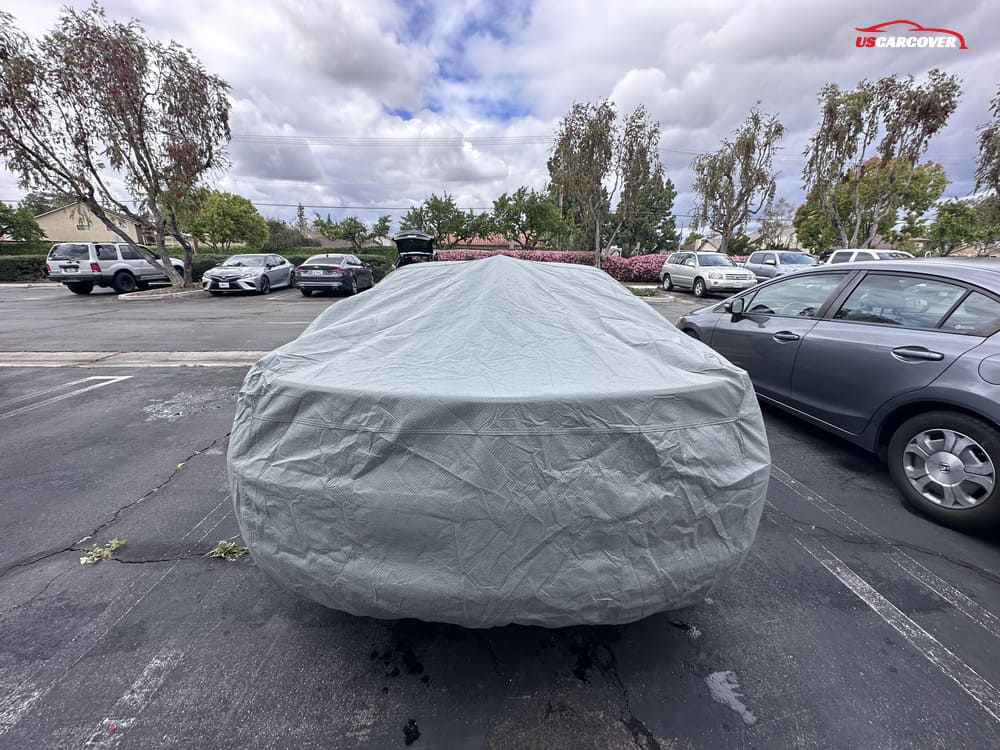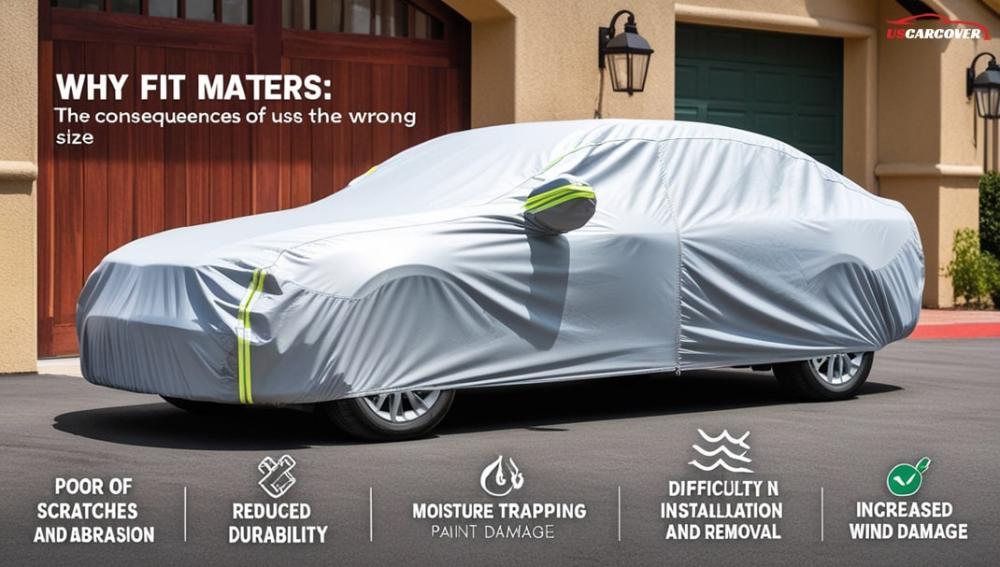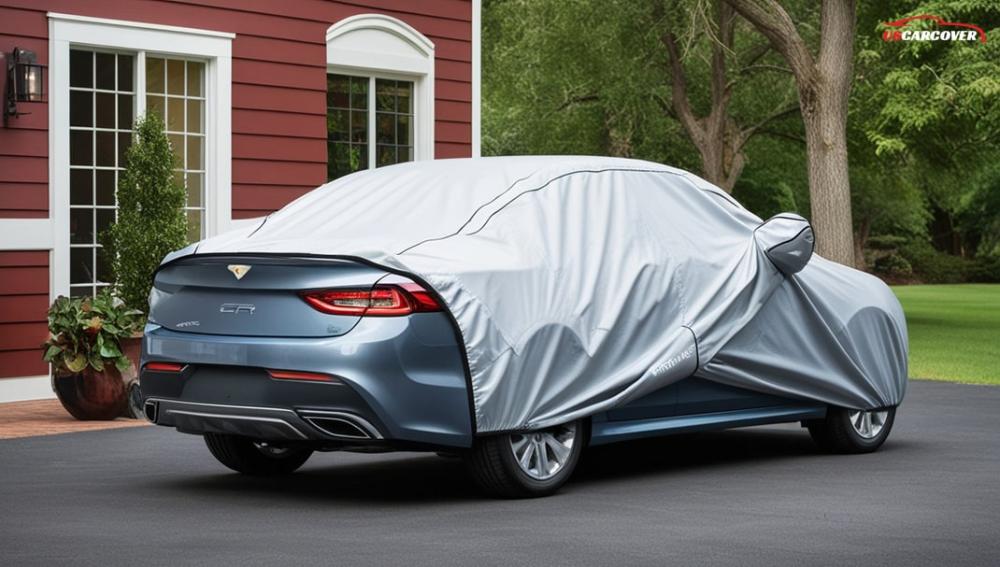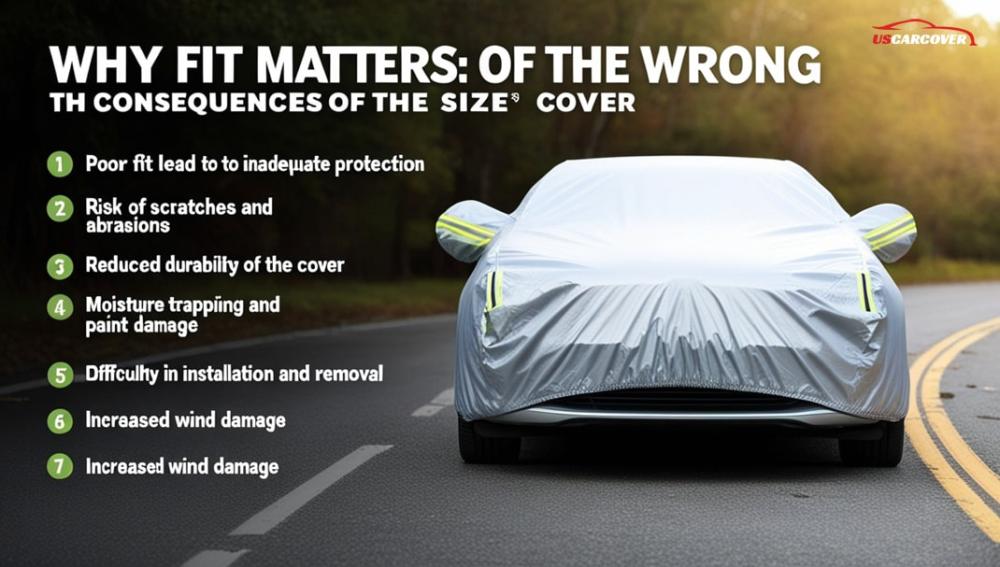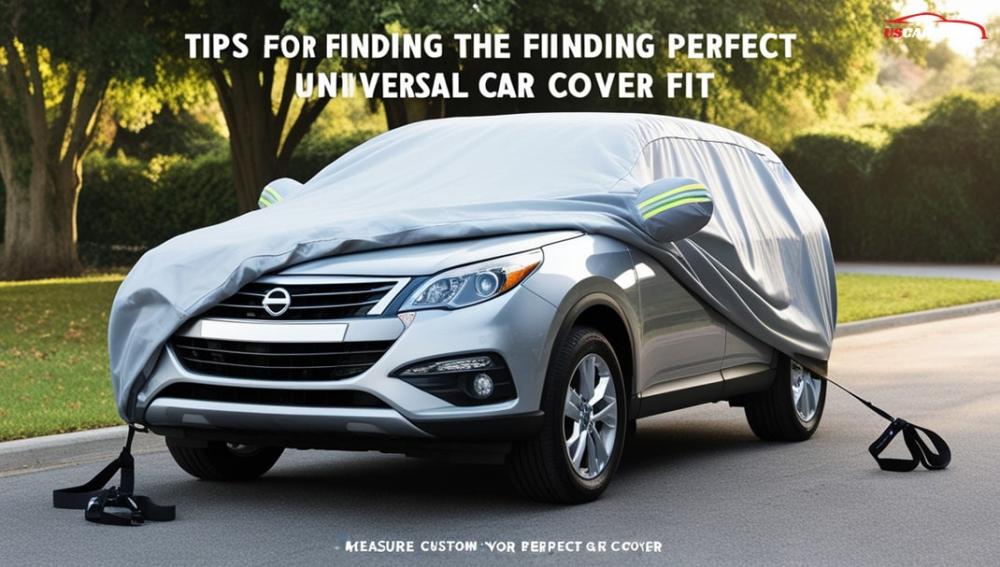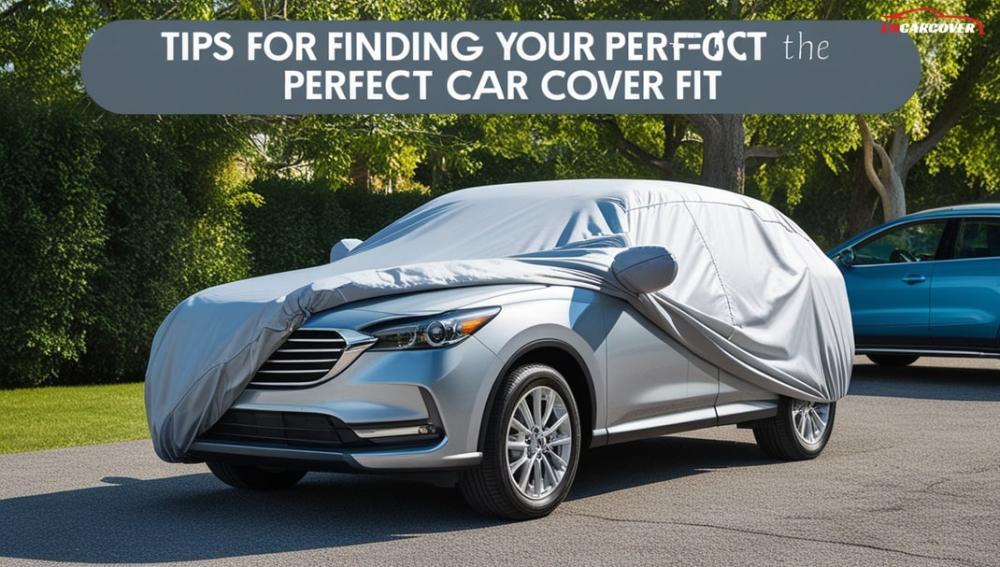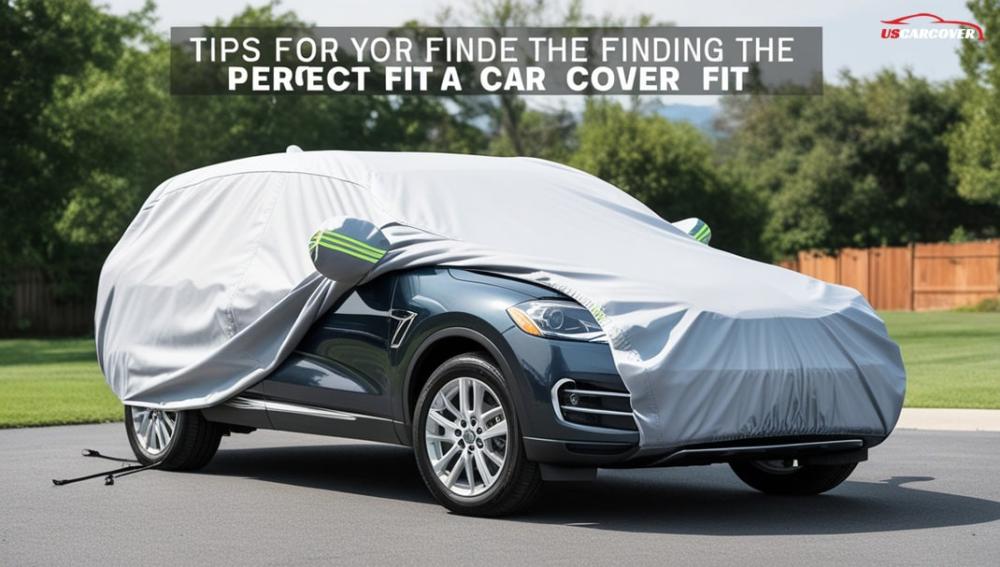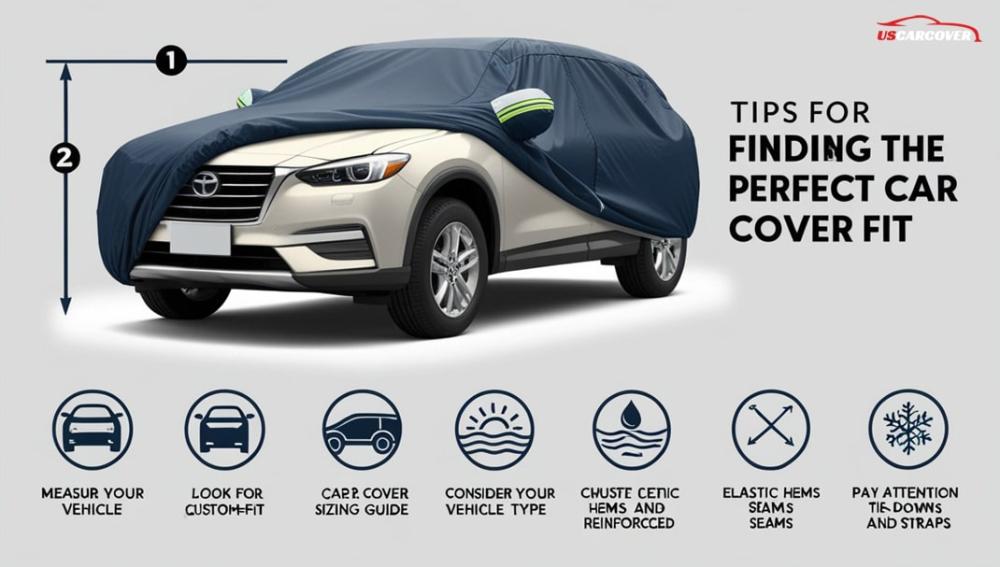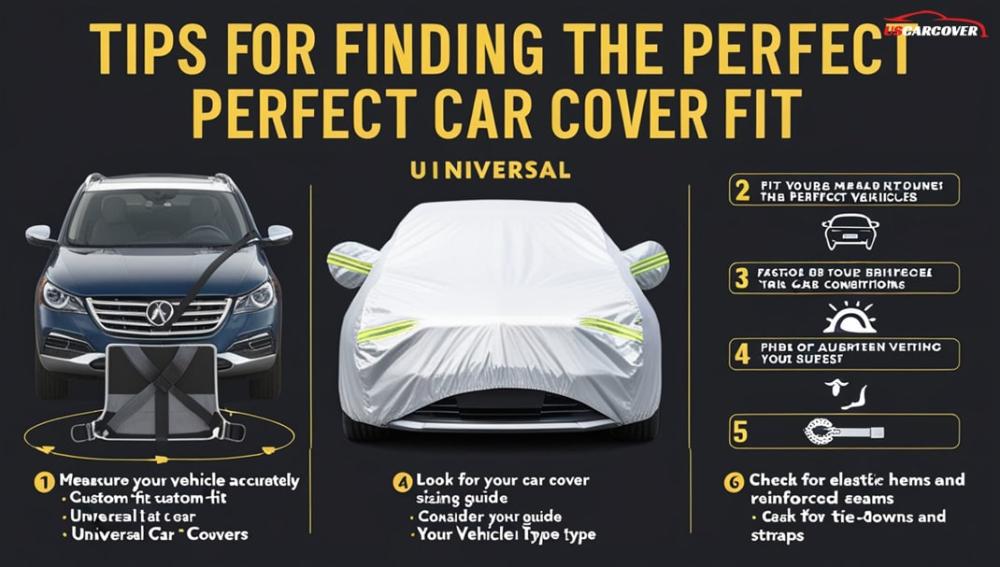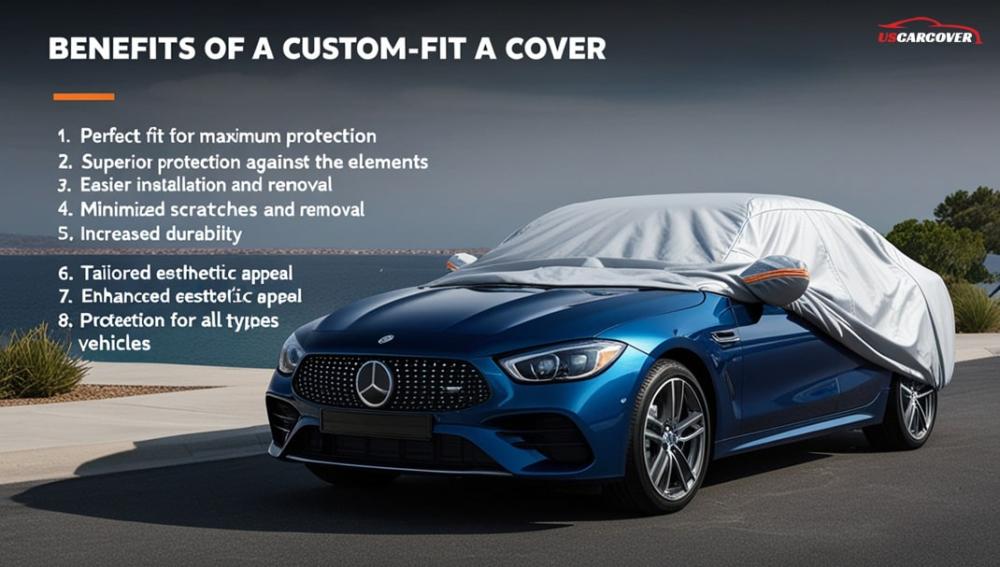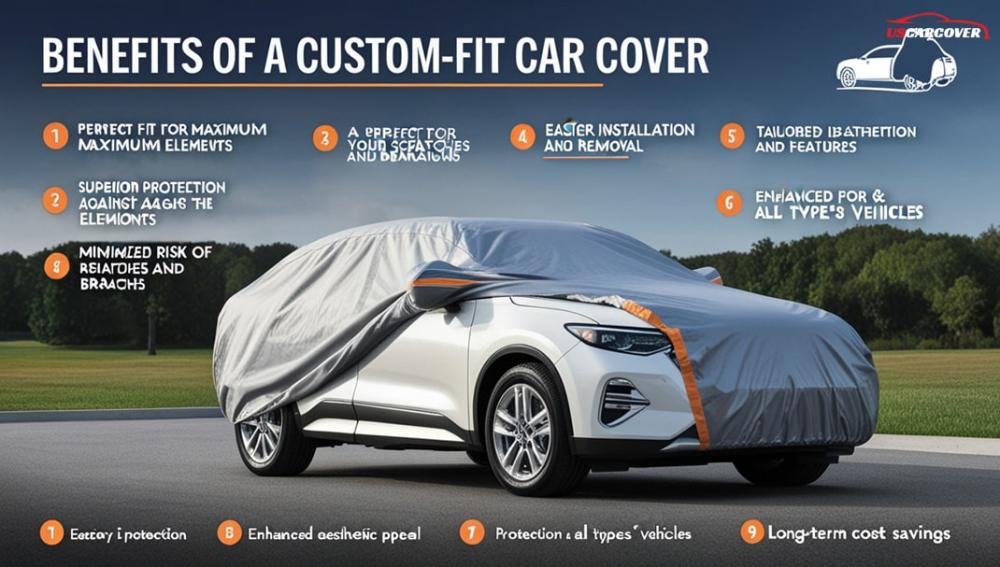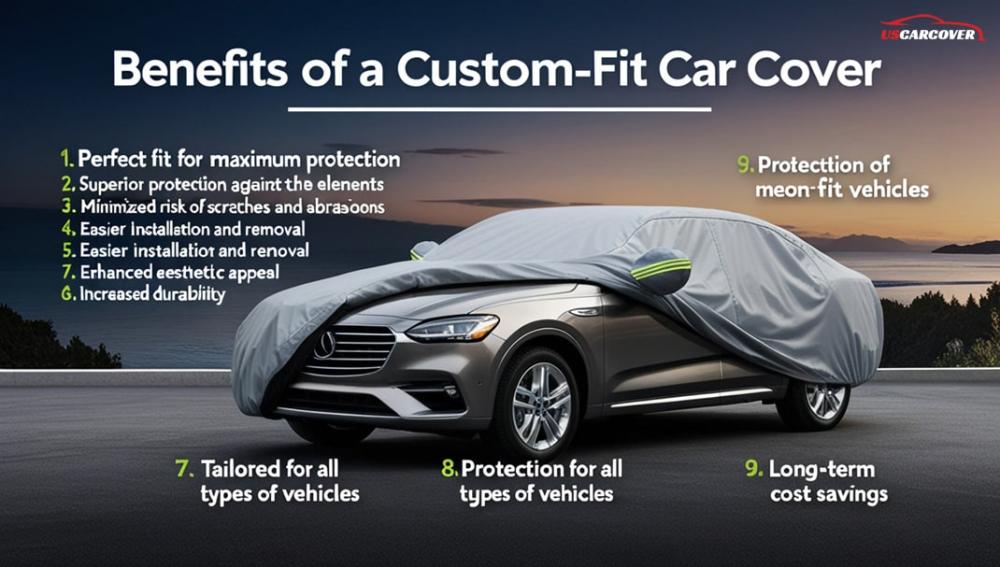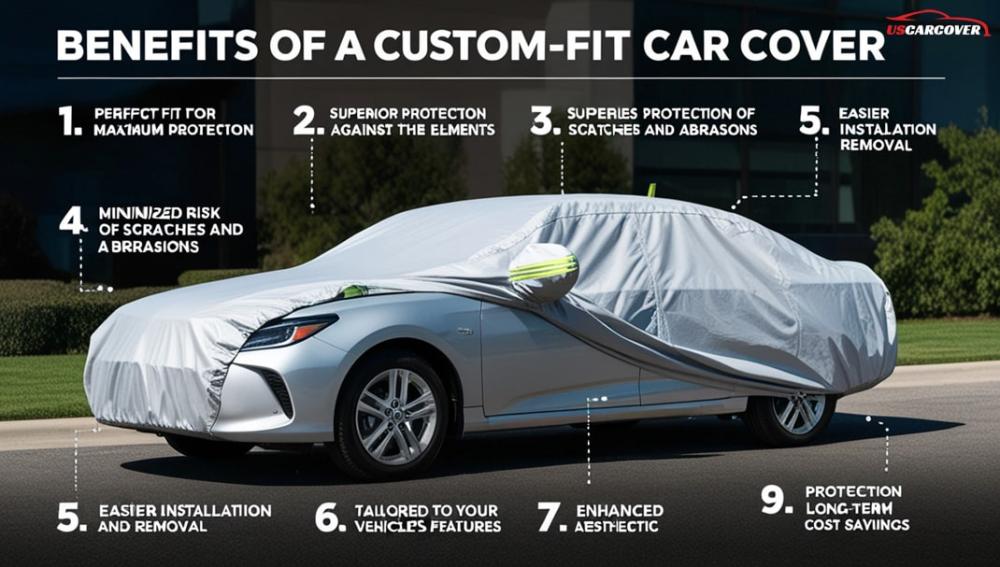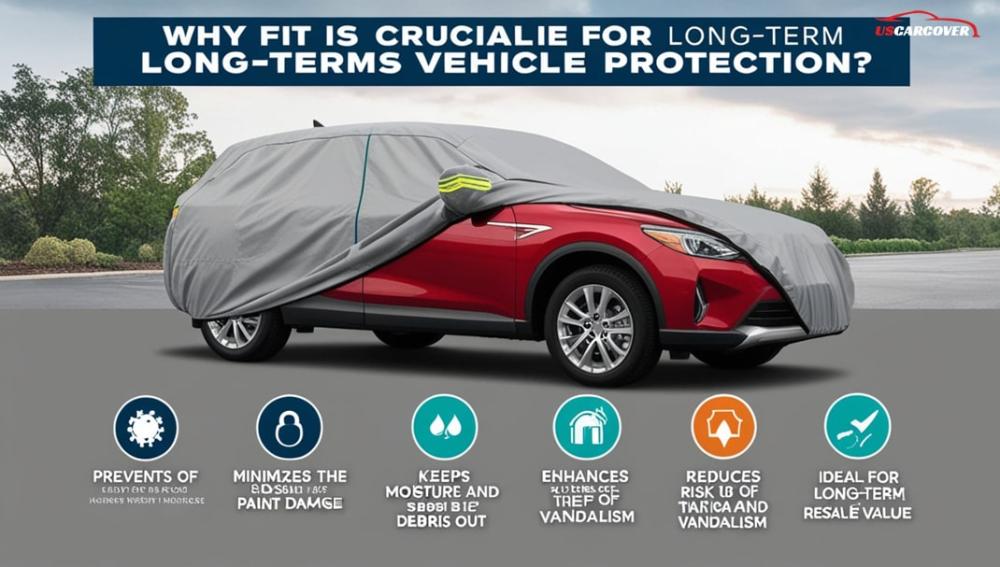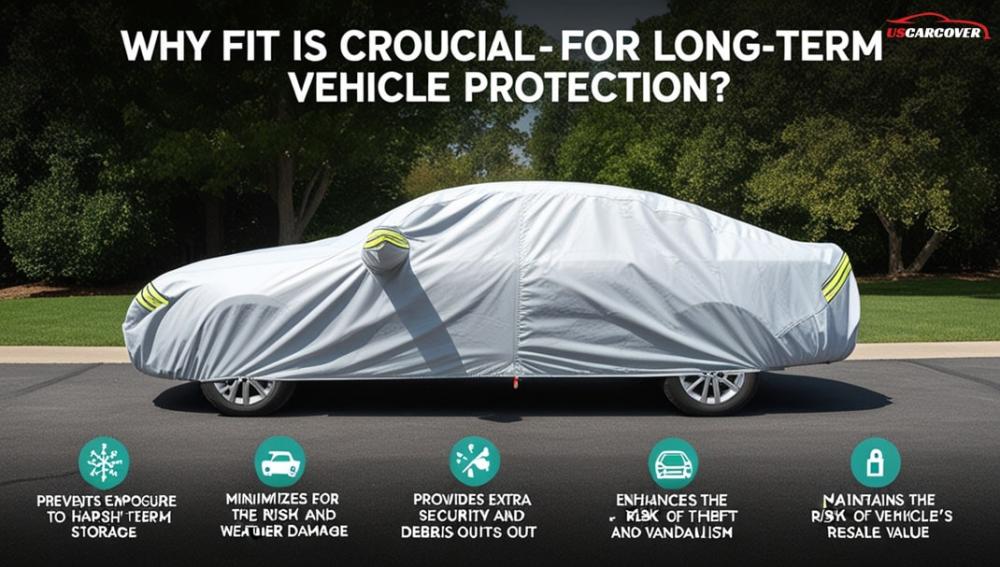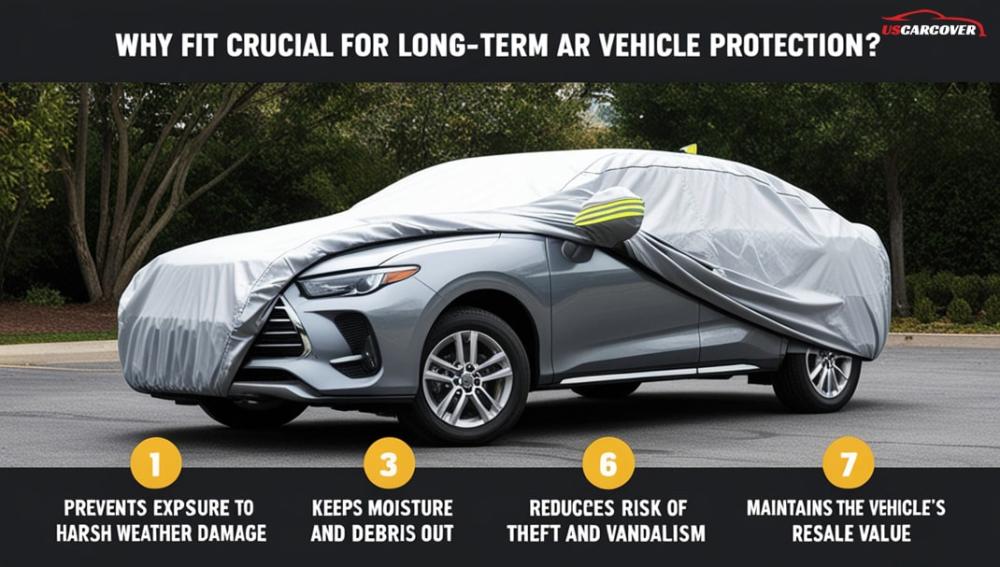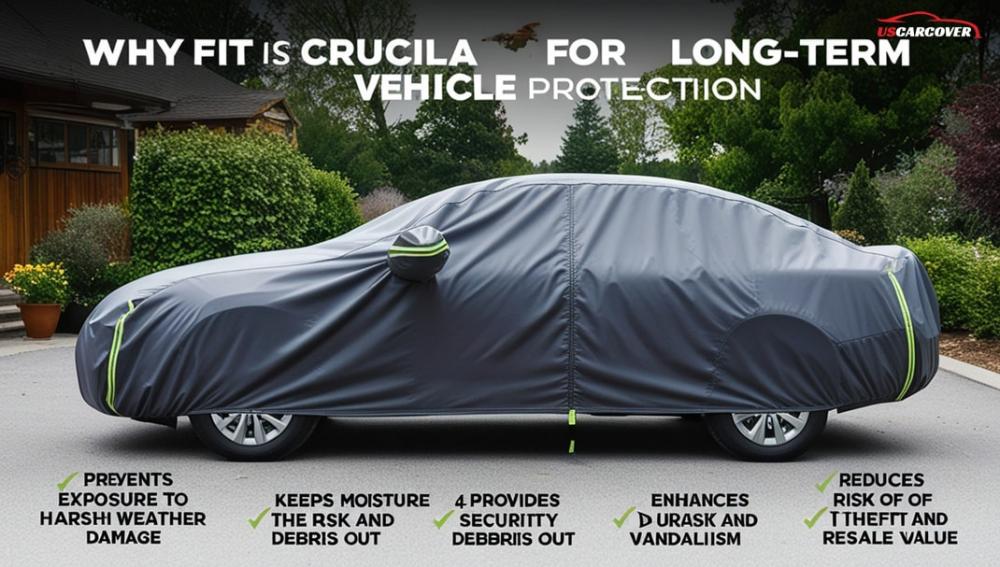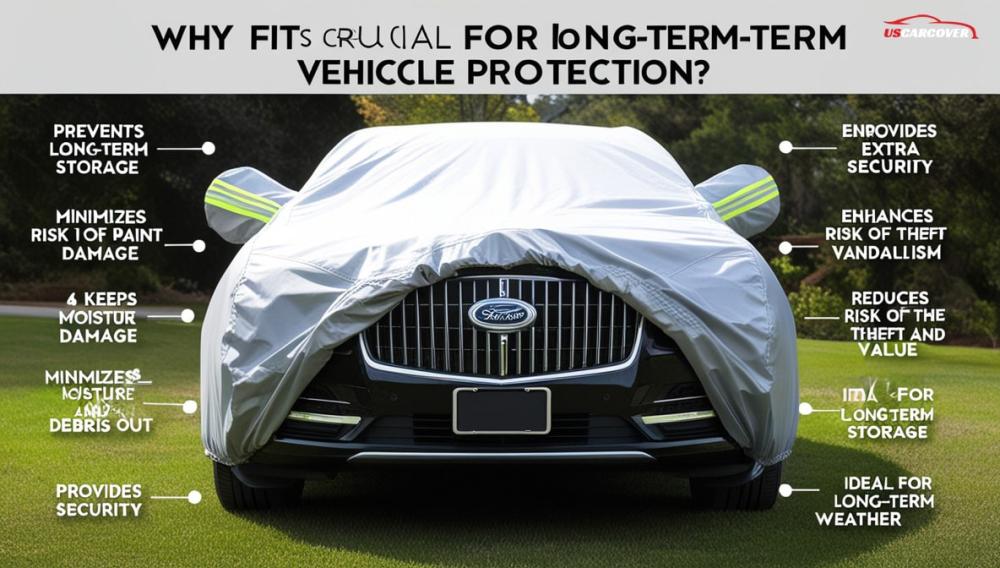Custom-fit car covers provide unmatched protection for your vehicle against weather, dust, and damage. Learn how to choose the perfect fit and discover why tailored covers are the best choice for long-term care. Shop premium, affordable covers now at USCarCover.com!
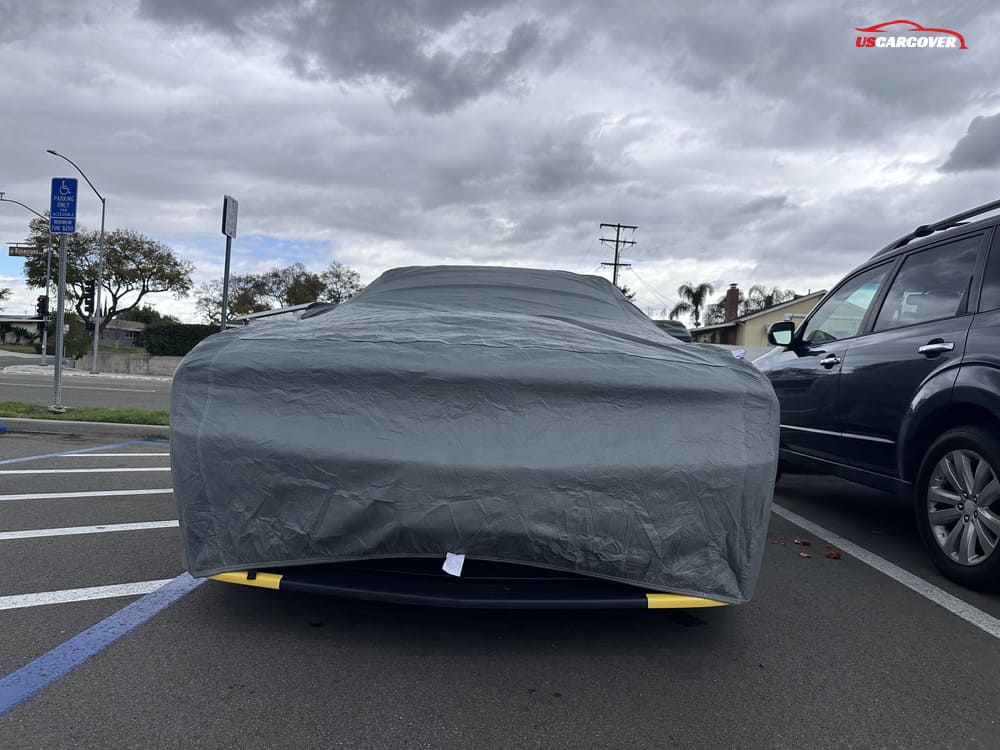
How to Measure Your Car for the Right Car Cover Size
Accurately measuring your vehicle is the first step to ensuring you purchase the right car cover size. A well-fitted car cover provides better protection against the elements, prevents damage, and ensures long-lasting use. To get the perfect fit, it's essential to measure key dimensions of your car correctly. In this section, we’ll walk you through a step-by-step guide on how to measure your car for the best-fitting cover.
1. Measure the Length of Your Vehicle
The first and most important measurement to take is the length of your car. Use a flexible tape measure to determine the distance from the front bumper to the rear bumper. Make sure the tape is straight and follows the natural line of the car’s body. Don’t forget to include any protruding features such as a spoiler, bike rack, or extended bumpers, as these can affect the fit.
Accurately measuring the length is crucial for both custom-fit car covers and universal car covers because a cover that’s too short won’t provide full protection, while an overly long cover will be loose and prone to shifting in windy conditions.
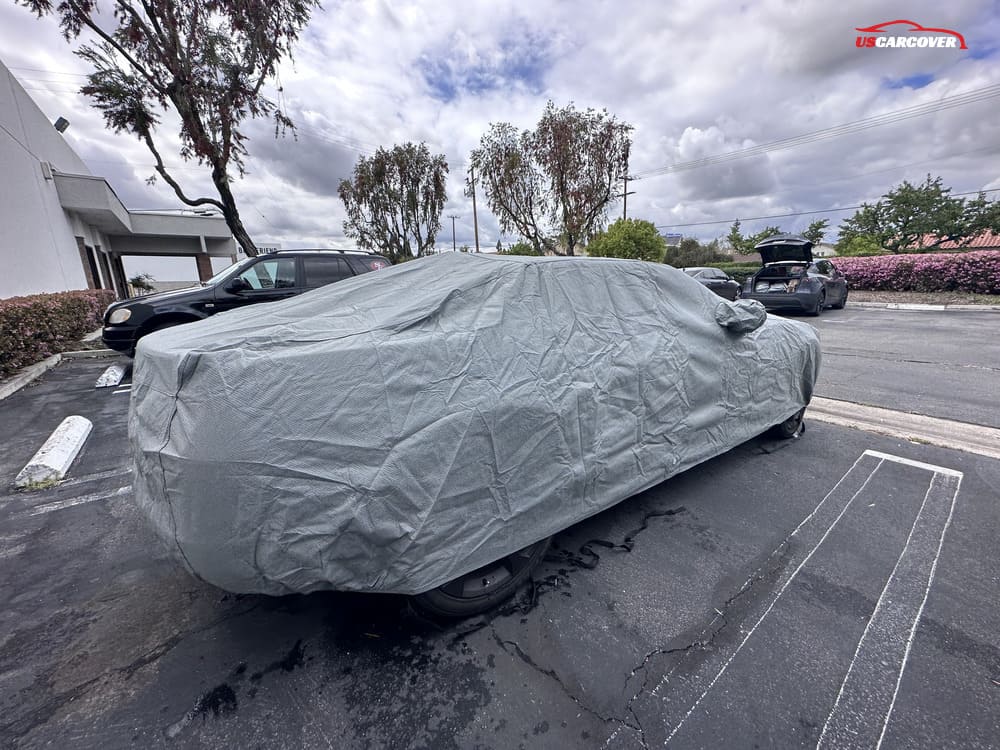
2. Measure the Width of Your Vehicle
Next, you need to measure the width of your car, from side to side, at its widest point. This typically includes the side mirrors, so be sure to account for them in your measurement. Start from one side mirror and measure across to the other side.
A proper width measurement ensures that the car cover fits snugly over the entire vehicle without leaving any part exposed. If your vehicle has folding side mirrors, consider whether you want the cover to fit tightly when the mirrors are folded or unfolded.
3. Measure the Height of Your Vehicle
The height of your vehicle is also an important measurement. Use a tape measure to check the distance from the base of the tires to the highest point of the car, usually the roof. If your vehicle has added features such as a roof rack, cargo carrier, or antenna, make sure to include these in your height measurement to ensure the cover fits over them as well.
Properly measuring the height is essential, especially for taller vehicles like SUVs, trucks, or vans, as a car cover that is too short will leave part of the car exposed to the elements.
4. Consider Special Features and Modifications
If your vehicle has any modifications, such as a custom spoiler, body kit, or oversized tires, it’s crucial to account for these in your measurements. These features can significantly alter the dimensions of your vehicle, and failing to measure them can result in a poorly fitted cover.
For example, vehicles with large off-road tires or lift kits may require an oversized car cover to accommodate the extra height and width. Similarly, cars with long antennas or roof-mounted accessories might need a cover with additional length or a specific cut-out for these features.
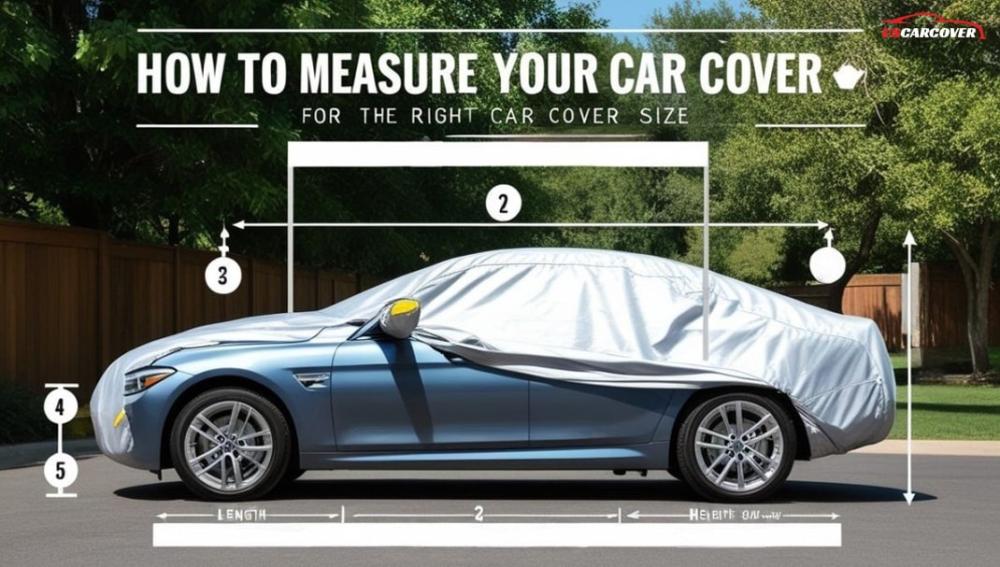
Related Articles: Custom-Fit vs. Universal Car Covers – What’s the Difference?
5. Use the Manufacturer’s Sizing Chart
Once you have your vehicle’s exact dimensions, the next step is to compare these measurements to the car cover sizing chart provided by the manufacturer. Most brands offer detailed charts that recommend the appropriate cover size based on the length, width, and height of your vehicle. This step is essential for ensuring you get a cover that offers a snug fit without being too tight or too loose.
For custom car covers, you’ll need to provide the exact measurements, and the manufacturer will tailor the cover specifically for your vehicle. For universal car covers, you’ll choose the closest size based on your car’s dimensions and the manufacturer’s recommendations.
6. Double-Check Your Measurements
Before purchasing your car cover, it’s always a good idea to double-check your measurements to ensure accuracy. Taking the time to remeasure your vehicle’s length, width, and height can help prevent mistakes and ensure you select the correct cover size.
If you’re unsure about your measurements or if your vehicle falls between two sizes, it’s often better to opt for the larger size, especially for universal car covers. A slightly larger cover can still provide full protection, while a cover that’s too small will leave parts of your car exposed.
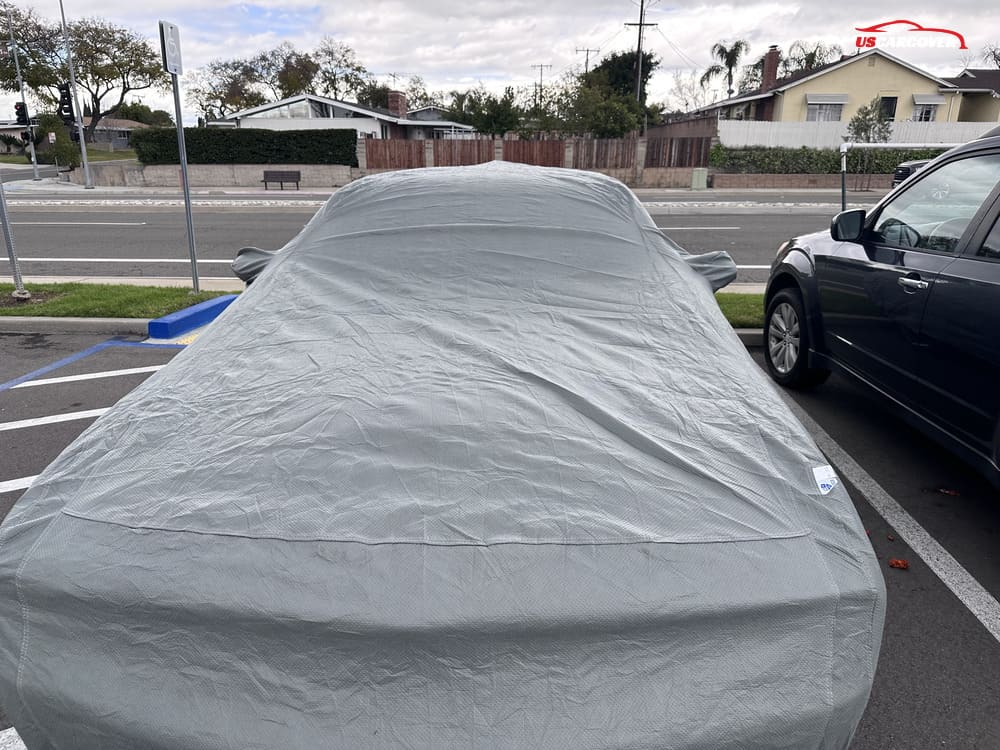
7. Consider Vehicle Type-Specific Covers
Some manufacturers offer vehicle-type-specific covers, such as those designed for sedans, SUVs, trucks, or sports cars. These covers are tailored to the general shape of the vehicle type and can provide a closer fit than a standard universal cover. For example, SUV car covers tend to be taller and wider to accommodate the bulkier shape of the vehicle, while sports car covers are often more aerodynamic and slim-fitting.
If your vehicle falls into a particular category, consider purchasing a cover designed specifically for that type. This can eliminate guesswork and provide a better overall fit.

